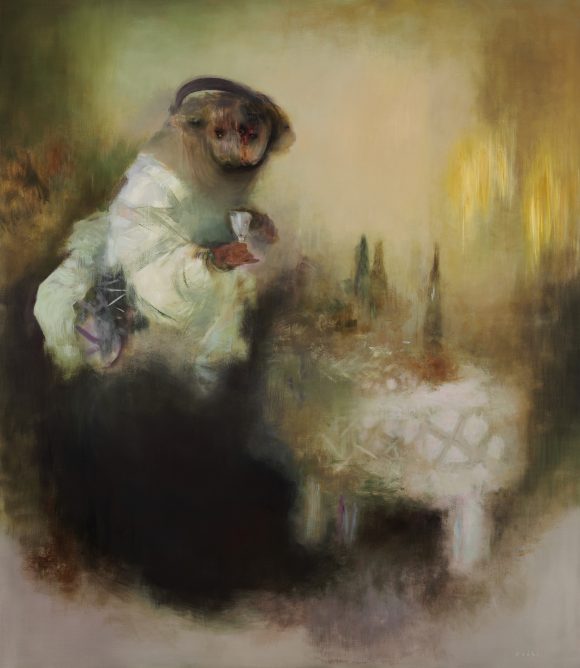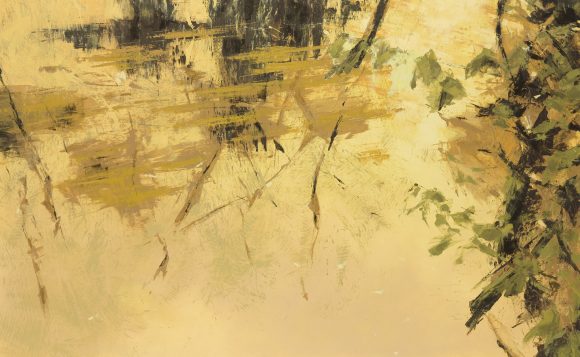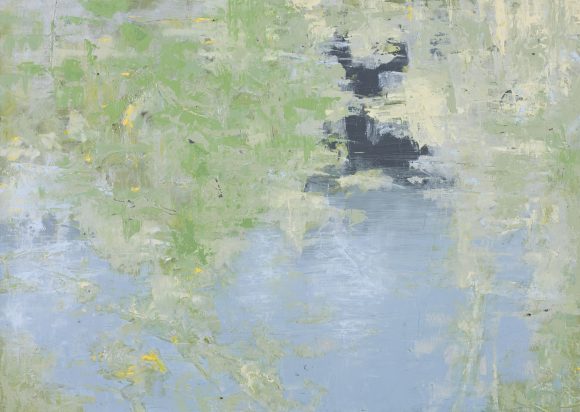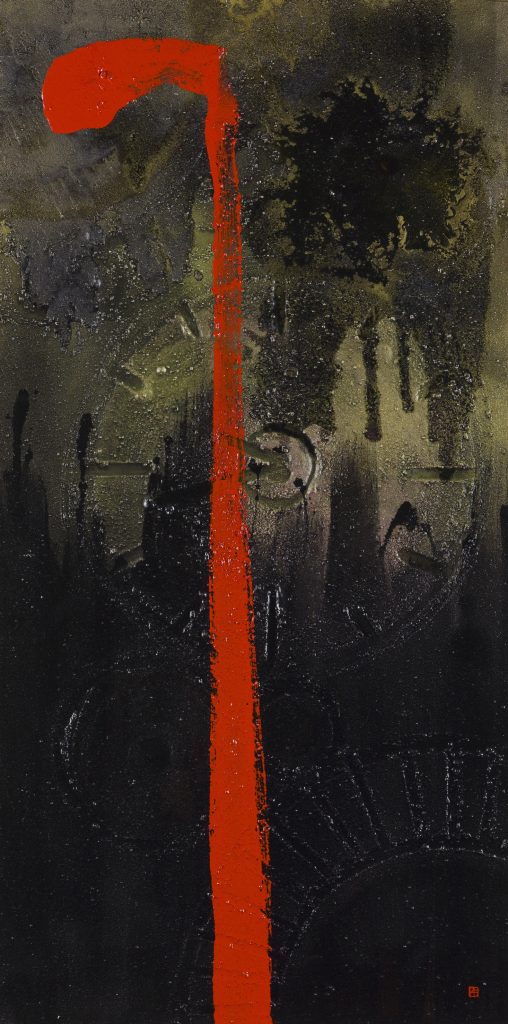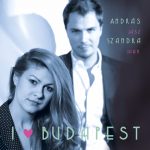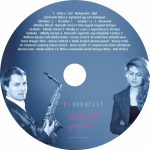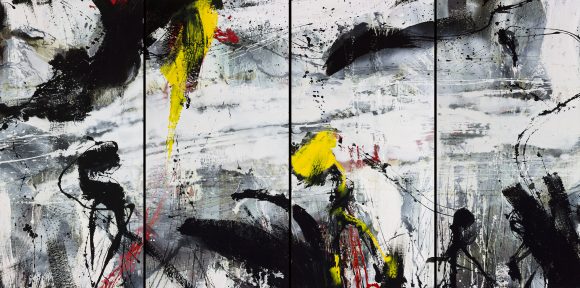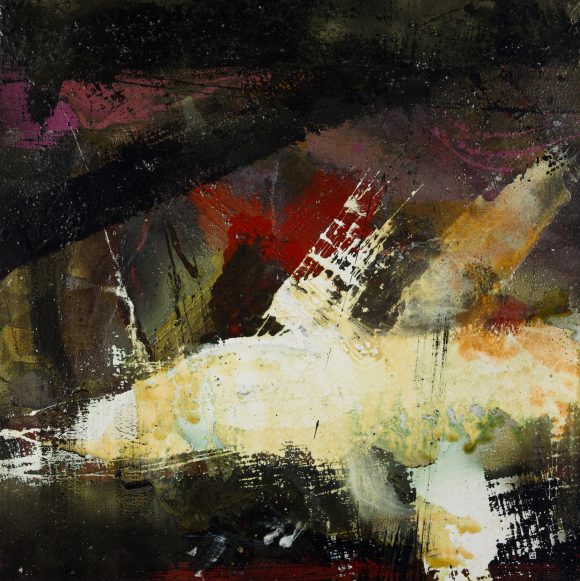ART IS FUN… OUR GALLERY IS THE EXTENDED VERSION OF YOUR LIVING ROOM
Rovataink:
Tartalomjegyzék erről az oldalról:
The CV exhibition of György Szabó…
In The Focus
In The Focus
Attila Rajcsók / In The Focus LIVE
I ❤️ Budapest
Iván Paulikovics sculptor statue inauguration
In The Focus
In The Focus
In The Focus
Attention
In The Focus
Szandra Iván & András Jász / I ❤️ Budapest
Artist in Residence 2014 in Wien
In The Focus
In The Focus
In The Focus
Visszaugrás a navigációraAz oldal cikkei bevezetőkkel:
In The Focus
„Vernissage” by Róbert Csáki is ruled by an abortion. Although his shapes don’t disserve from his environment, his hooked bust, the whiteness of his shirt, and the wine glass in his hand are the most real elements of the painting’s blurred world. Not as his head on his thick neck, meaning heads, which are limbs of the same body, they are turning to us with different visages. This worrying being, if we take a closer look, really is a polite monster, who’s squint is shy, and holds his glass clumsy, with his little finger holded away from it. As if he isn’t home at the shades of the picture’s world. Vernissage is a French word, meaning the opening of an exhibition. From the title of Csáki’s artwork is clear, that this is the occasion of the figure sitting by little white table. His embarrasment is caused by the fact, that we can see him in whole, that nothing is protecting him from our staring. In this habit and situation there is a pure indication how the artist stands in front of the audience while showing them his artworks: in nudity and defencelessness.
photo: Mihály Borsos (misi)
written by: Zsófi Máté
Vernissage (230x200cm, oil on canvas, 2010)
In The Focus
On „Flux LVIII” by Imre Barna Balázs a dynamic system of gestures is appearing on the surface of the painting, blazing in the colors and lights of dawn. The gestures vivify the picture, while they transmit the stillness of motionless stationarity. Their various colors, variant intensity of their stratification do not result tension in the space of the picture. The ground of the artwork and the gestures on it resolve to eachother, creating indissoluble whole, sense of pure harmony. Though the gestures seem stochiastic, they are part of a larger order, in which every detail has it’s own space and function. They fill the space of the artwork with movement and stationarity at the same time, as part of the conscious composition. In the shapes of gestures we can observe the forms of nature on „Flux LVIII”. The painting by Imre Barna Balázs reflects how the artitst’s, or even the viewer’s inner world translates, recreates well known sceneries. Thus it is connetcted with the reality, not only visualizes it, but unfolds it’s connection to mental, spiritual contents with the instruments of painting.
photo: misi
written by: Zsófi Máté
Flux LVIII (130×210 cm, oil on canvas, 2014)
Attila Rajcsók / In The Focus LIVE
I ❤️ Budapest
Iván Paulikovics sculptor statue inauguration
In The Focus
On “Flux LXIII” by Imre Barna Balázs we get into an other reality. The abstract painting, wich creates an organic system of gestures is inspired by forms of nature. On the pale blue surface of the picture there are luminous shapes of paint. They can be understood as a reflection, which appears on the water, an element of the living nature. We don’t know the real landscape, only the reproduction. The painting itself takes one more step foreward, since it is a reproduction of a reflection, i.e. a reproduction which has no original. The “Flux LXIII” faces a philosophycal question as old as art itself: is art able to be more than the reproduction of reality? If we look at the artwork by Imre Barna Balázs, we can realize, that the important thing is not the similarity between the painting and reality. The picture’s composition without any eventuality, creates an own, inner order, which leads the viewer’s perspective into the depth of the painting, to a mystical darkness, a distant sphere. It doesn’t urge us, to imagine, build the orginal reality, what is only reflected. Contrarily, it creates a substantive world.
photo: Misi
written by: Zsófi Máté
Flux LXIII (50×69,5cm, oil on wood, 2014)
In The Focus
„Beach” by Róbert Csáki calls the mood of sultry, endless summer days into mind. On the picture, a wierd, friendly figure is bathing in the peaceful water. There is unsophisticated grace in his presence, with his shiny life saver and vast, azure beachball he is dispossessing the stylized artwork. He’s looking at us with his tiny eyes, which transmit ease and gloom at the same time. The whole painting is defined by this gentle ambivalence. It’s atmoshere is filled with airiness, childlike joy because of the scenery of the toys, but still the waft of the lifeless flowers makes it heavy with tiredness and solitude. The lovely figure on „Beach” by Csáki invites us into the painting’s world. As if he’s asking us to play with him, or simply share the worm summer silence, timeless stationarity, drowsy brightness.
photo: Misi
written by: Zsófi Máté
Beach (21x20cm, oil on wood, 2003)
In The Focus
On the newest painting by Róbert Csáki, there is a bed in the foreground. Although it’s empty, it suggests the human presence on the picture, as well as the bridging on the left side. The painter terminated the bed and the wreathing shade towards it with angled compositional elements. These do not register to eachother, they don’t close perfectly a safe inner space. As if the foreground was a room, open to every directions, only divided from the infinite background with these anomalous forms. Two worlds are dissevering on Csáki’s artwork, they could be the sphere of God and men, wakefulness and dream, reality and fantasy, life and death. We come to the measure of these as viewers. As the counterpoint of the bed, there is a tiny but significant luminary in the distance, maybe it’s illuminating the piece of furniture. This star carries the hope, that we are able to come at the sphere it’s part of. However, the artwork by Róbert Csáki is surrounded by the sense of neglect, it’s atmosphere is determined by worrying stationarity. The picture may opens the door to transit between the two worlds, but also warns us, that we cannot exist in them at the same time.
photo: Misi
written by: Zsófi Máté
Untitled (59x68cm, oil on canvas, 2009_2014)
Attention
We are closed on the 27th and 28th of march but we pleased to informed you that we prolong our PAF exhibition untill the 25th of april.
In The Focus
To visualize temporality is a great aritstic pledge. “Hidden Time” by PAF interprets time as a mechanical construction at first sight,inasmuch as the circles scooped into the harsh surface of the painting evoke the spur wheels of a clock. At the center of the artwork, as contact point of all these components, there is a clockface. PAF represents measurable, objective time. Nevertheless this isn’t the full extenct of temporality. The paining’s dark colors, it’s scrachty,mysterious surface, infinite inner spaces do not suggest the domesticity,concreteness of the illustrated topic. Technical complexity of the picture carries the possibility of mental compelxity: the painting tells about time that is accessible to all, about subjective time, even about the time of the artwork. The picture is bisected by a vertical red gesture,which is dominating the whole painting, and could be the intervention into operation of time. With this powerful gesture PAF takes possesion of the unknowable on “Hidden Time”.
photo: misi
written by: Zsófi Máté
Hidden Time (100x50cm, mixed technique on wood, 2013)
Szandra Iván & András Jász / I ❤️ Budapest
Artist in Residence 2014 in Wien
In The Focus
„Demons and Chaos I-IV” by PAF create a whole. The four artworks share the same system of gestures, they are perfect continuation of each other. The dynamic, powerful gestures don’t respect their frames, stretch beyond their measures, so the for paintings become permeable. The „Demons and Chaos” series is an open artwork, both visually and mentally. The interlocking gestures create a chaotic, deep, quintessential space in the picture, and in some cases they become dark, demonic figures. Variety of touch, colors, consistency of the paint the viewer can always pioneer new figures in trying to be released of the demons haunting them, overcome the chaos, reveal the secret hidden by the paint streaks. New recognitions lead to other representations. Accordingly reflexive relations of the viewer and the artwork can change the whole painting, is able to generate very different emotional impressions. This mental openness makes „Demons and Chaos” series by PAF unfailing, always vivifies it in new and other lives.
photo: Misi
written by: Zsófi Máté
Demons and Chaos I-IV (100x50cm/piece, mixed technique on wood, 2014)
In The Focus
Chaos means in vulgar tounge maze, an unwanted condition, in which we would rather not spend time. On the other hand, chaos means infinite space, unshapen matter, from which the universe came into existance. Latter approaches “Chaos” by PAF. Stratification of the paint, varied facture provides strained tone to the picture, which plants the fear of the unknowable into the viewer, but this is only the surface. If we lose ourselves in the artwork, the chaotic spectacle could become an order without any eventuality.Gestures create a conscious system, they are forces taking effect on eachother in tackle on the painting, mostly the black and the white ones. In the space of strained relations of dark and light, as the center of the composition, there is a red gesture, which is one of the most important elements in PAF’s art. This is the substratum of the painting’s order, which vindicates and terminates the aforsaid discrepancy at the same time. Unity of gestures, colors and matter on PAF’s artwork is materialization of the creativeness chaos possesses.
photo: Misi
written by: Zsófi Máté
Chaos (100x100cm, mixed technique on wood, 2013)
In The Focus
„Cloister” and „City Lights” by Róbert Csáki show similarity in colours, touch and in representation of lights. The landscapes on the pictures despite their strangeness carry the sense, that we have seen them before. They could be fantasies or memories, which are beyond control, surrounded by versatilty, transiency. On „Cloister” from the background’s infinite, deep shade buildings meet the eye, which are dissevered from their environment because of light perfusing them. Whiteness of the church’s tower has a central role, it rules the painting. Constructivity of this colour is determining in case of „City Lights” too. The two white paintstains overwrite the harmony of deep colours on the artwork. However what seems breaking of the picture’s order is in fact a necessary component. Reddish spots on „Cloister” are also telling of a conscious, precise composition. They change the whole painting, terminate the accidental aspect of the sinister,transitory landscapes. Inter alia these tiny paintstains contain the genius of Róbert Csáki.Their startling strength is realization, turning into stationarity of riddling interaction of tones and light and unlimited visions.
photo: Misi
written by: Zsófi Máté
Cloister (30x30cm, oil on wood, 2013)
City lights (40x35cm, oil on wood, 2013)















